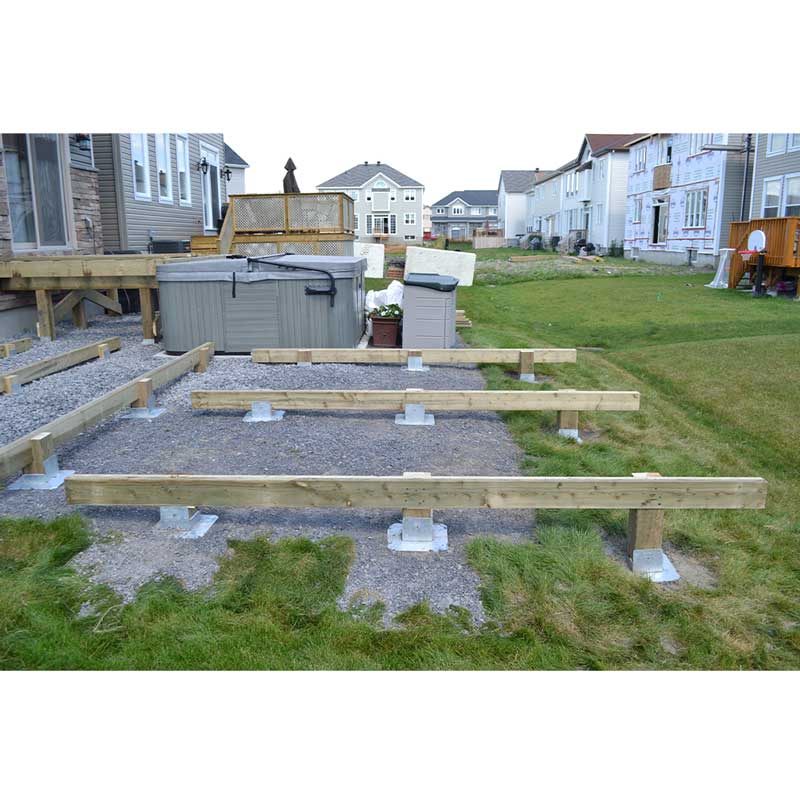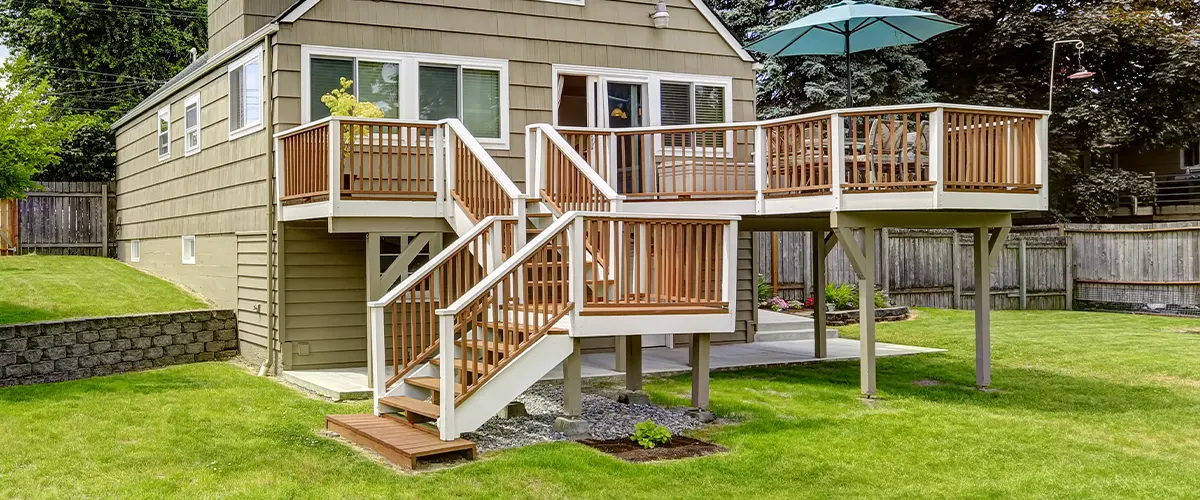Expert Tips for Setting Up Deck Footings to Support Your Outdoor Area
When it comes to building a deck, one of the most essential aspects to consider is the setup of proper grounds. These grounds are the structure upon which your outside space will relax, giving security and support for years to come. What exactly does it take to install deck grounds appropriately?
Relevance of Appropriate Deck Footings
Correct deck footings are essential for making certain the security and longevity of your exterior space. Without solid and correctly mounted grounds, your deck might end up being unstable, leading to security hazards and expensive repairs.

Along with security, appropriate deck footings additionally contribute to the longevity of your exterior area (Deck Footings). Footings that are made and built to endure the elements and dirt conditions in your location will help protect against the deck from settling or moving in time. By ensuring the grounds are properly sized and mounted, you can reduce the threat of damage to the deck framework, prolonging its lifespan and minimizing the need for pricey repair work or replacements
Selecting the Right Kind of Grounds
When picking the ideal kind of grounds for your deck, it is necessary to consider factors such as dirt problems, neighborhood building regulations, and the total style of your outside area. The sort of footing you choose will play an essential role in guaranteeing the stability and longevity of your deck.
One common kind of ground is the concrete ground. Concrete grounds are ideal for the majority of dirt problems and give superb assistance for decks.
In many cases, you might require to utilize specific footings, such as pile footings or deep foundations, if you are constructing a huge or multi-level deck. These grounds are made to disperse the weight of the deck over a bigger location, making certain security and stopping sinking or resolving.
Prior to selecting a kind of ground, it is vital to consult neighborhood structure codes and guidelines to guarantee compliance. In addition, take into consideration the style and intended usage of your outside space. Factors such as the dimension, shape, and load-bearing requirements of your deck will certainly influence the type of footing that is most ideal.
Preparing the Ground for Footing Setup
To correctly prepare the ground for footing installation, it is necessary to examine the soil problems and take required actions to make sure stability and durability of the deck. The very first step is to dig deep into the location where the grounds will be installed. The depth of the excavation will depend upon the frost line in your area and the specific demands of the deck style. It is vital to remove any kind of greenery, rocks, or particles from the excavation to ensure a strong foundation.
When the area has been try this dug deep into, the following step is to compact the dirt. This can be done using a plate compactor or by utilizing a hand tamper. Condensing the soil assists to remove any kind of voids or air pockets, which can result in settling and instability in time.
After condensing the dirt, it is essential to lay a layer of gravel or smashed rock at the bottom of the excavation. This will supply drain and assistance to avoid water from merging around the grounds, which can result in erosion and instability.
Step-by-Step Overview to Putting Up Deck Footings
After appropriately preparing the ground for footing installment, the following action is to start the procedure of installing deck grounds. This detailed guide will give you with a clear understanding of how to install deck footings for your outside area.
Determine the area: Start by noting the placements of the deck footings utilizing stakes and string. Make sure that the locations straighten with the layout and format of your deck.
Dig the holes: Utilize a post hole miner or an auger to dig the holes for the grounds. The deepness and diameter of the holes should remain in conformity with regional building ordinance and the certain requirements of your deck layout.
Degree the holes: Utilize a level to make sure that the holes are dug to the proper deepness and are degree with each various other. (Deck Footings)
Include gravel: Place a layer of crushed rock at the bottom of each hole to enhance drain and avoid the wood from deteriorating.
Insert the grounds: Put the footings into the openings, making certain they are level and plumb. Use a degree and a measuring tape to make certain precision.
Protect the footings: Put concrete into the openings around the footings, loading them to the top. Utilize a post degree to make sure the footings remain level as the concrete sets.
Allow time for curing: Let the concrete treatment according to the supplier's directions prior to waging the deck building.
Common Blunders to Avoid During Footing Installment
One crucial aspect to take into consideration during the setup of deck footings is preventing common errors that can jeopardize the security and longevity of your exterior space. While deck grounds may feel like a easy and uncomplicated part of the building and construction process, overlooking specific variables can result in pricey fixings and potential security hazards down the line.

Furthermore, overlooking to set up proper drain measures can trigger water to accumulate around the grounds, leading to rot, decay, and the ultimate weakening of the deck's foundation. Making use click here for more info of the wrong type of footing product or failing to sufficiently safeguard the footings can compromise their architectural honesty.
To avoid these mistakes, it is necessary to seek advice from an expert or comply with sector standards to make certain proper footing installation. By doing so, you can make sure the security and long life of your exterior room, providing a delightful and secure setting for years to come.
Final Thought
Finally, setting up appropriate deck grounds is critical for the security and long life of your exterior room. By picking the appropriate type of footings and sufficiently preparing the ground, you can guarantee a strong structure for your deck. Following a step-by-step overview and preventing common blunders during footing installment will certainly further boost the toughness and safety and security of your deck.
Appropriate deck grounds are necessary for guaranteeing the security and long life of your exterior space. The footings serve as a link in between the ground and the deck, permitting the weight of the deck and its passengers to be distributed evenly into the dirt.One typical type of ground is the concrete ground. Insert the grounds: Position the footings into the openings, making sure they are degree and plumb. Protect the footings: Pour concrete right into the holes around the grounds, loading them to the top.